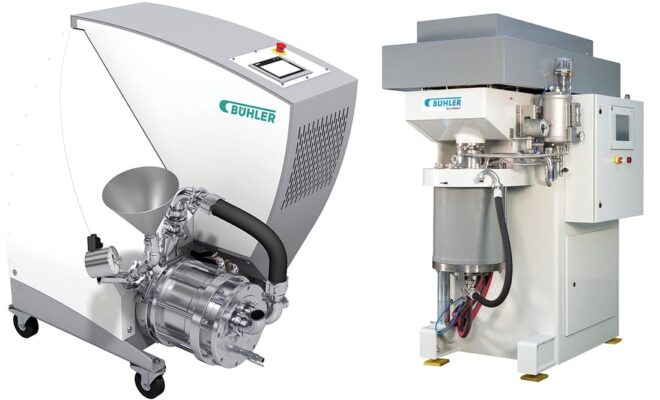Size Reduction Machines of Different Sizes

Machines to reduce size are critical in many industries where big materials would be converted into smaller, more manageable forms. These machines are essential in mining, construction, chemical processing and pharmaceuticals where precise particle sizes are required for further processing.
Knowledge on the various kinds of size reduction machinery, their specific functions and areas of application can greatly enhance efficiency and productivity in industrial operations.
Importance of Size Reduction Machines
Size reduction refers to the process by which large masses or lumps of material are broken down into smaller pieces. This procedure helps improve material handling, promote chemical reactions, and prepare them for subsequent processing stages. Various types of machines perform size reductions through different techniques such as compression, impact, shear, or attrition.
Primary Machines for Size Reduction
Primary size reduction machines handle the initial stage of breaking down large materials into smaller sizes. This equipment is strong enough to handle huge quantities of raw materials, thus making it a necessity in large-scale operations.
Jaw Crushers
Jaw crushers are among the most common primary crushers that employ a pair of jaws for crushing purposes. One stays still while the other moves back, causing a compressive force that breaks the material apart.
- Advantages: long-lasting, simple design, and dependable performance.
- Applications: mining processes like construction work and demolition recycling efforts.
Gyratory Crushers
Gyratory crushers consist of a conical head which gyrates within a larger cone-shaped chamber. The moving head crushes against chamber walls until material is completely crushed.
- Advantages: can hold bigger amounts; effective for hard materials
- Applications: large-scale mining processes, including quarrying activities.
Secondary Reduction Machinery
After primary size reduction has taken place, secondary machinery breaks down material further to suit specific applications. This step prepares it either for tertiary crushing or other methods of treatment.
Cone Crushers
Cone crushers work in a similar manner to gyratory crushers but they are mostly used for secondary crushing. They come with a rotating cone within a fixed bowl which has the material crushed between them.
- Advantages: high efficiency and good particle shape.
- Applications: mining, such as aggregate production and recycling
Impact Crushers
Materials are broken down by impact crushers through high speeds. There are two types: horizontal shaft impactors (HSI) and vertical shaft impactors (VSI).
Horizontal Shaft Impactors (HSI): Utilize a spinning shaft to throw material into contact with impact plates.
Vertical Shaft Impactors (VSI): Have material thrown at it using a vertical rotor against a stationary surface.
- Advantages: reduced sizes and fine particles that are uniform.
- Applications: Aggregate production, recycling, and mineral processing.
Tertiary Size Reduction Machinery
Tertiary machines produce extra-fine materials, often necessary for specific industrial uses. This stage ensures that materials meet precise specifications for further processing or end-use.
Roll Crushers
Roll crushers consist of two or more cylinders rotating in opposite directions. The rolls draw the material and compress it until it is crushed by shear forces.
- Advantages: simple design; effective for fine crushing.
- Applications: coal, clay, and soft rock crushing.
High-Pressure Grinding Rolls (HPGR)
Two counter-rotating rolls on HPGR apply high pressure to the material, leading to a significant size reduction.
- Advantages: energy-friendly, increased output per unit time.
- Applications: cement production; mining activities; or the field of mineral processing.
Fine Grinding Machines
Ball Mills
Ball mills use steel balls as grinding media to crush materials into fine powders. The rotating drum causes the balls to fall onto the material, grinding it down through impact and friction.
- Advantages: Versatile and effective for fine grinding.
- Applications: mineral processing, paint production, pyrotechnics.
Rod Mills
Rod mills use long rods for grinding media, resulting in a coarser product compared to ball mills.
- Advantages: efficient for coarse grinding.
- Applications: mineral processing, coal grinding.
Attrition Mills
Attrition mills use shear and impact forces to grind materials between two surfaces that move relative to each other.
- Advantages: fine, consistent products.
- Applications: chemical processing, food production, pharmaceuticals.
Specialized Size Reduction Machinery
Apart from standard machines, there are also specialized machines that handle unique materials and applications; hence, they offer solutions developed specifically targeting niche markets.
Hammer Mills
Hammer mills use rotating hammers to impact and break down materials. They are particularly effective for brittle materials.
- Advantages: high reduction ratio and versatility.
- Applications: coal, limestone, and gypsum.
Pulverizers
Pulverizers grind materials into very fine powders using a combination of impact, grinding, and shear forces.
- Advantages: fine particle size, precise control.
- Applications: pharmaceuticals, food processing, and chemical manufacturing.
Mobile Crushers
Mobile crushers offer flexibility and mobility, such that crushing can be done on site, reducing the hauling distance or costs associated with transporting material away from sites. These crushers run on tracks or wheels, allowing them to be freely moved within a site or transported between multiple sites with convenience.
- Advantages: portability, ease of use, and quick setup.
- Applications: construction waste recycling, quarrying, and mining operations.
Choosing the Right Size Reduction Machine
Different industries cannot do without size reduction machinery used to make materials smaller and more manageable by transforming them from larger sizes. Every type of machine, be it primary crushers (jaw and gyratory crushers) or secondary ones (cone and impact crushers), as well as specific equipment such as hammer mills and pulverizers, comes with unique benefits that are customized for individual purposes.
Professionals in this field can improve their operations, increase productivity, and cut costs on material processing by learning the various categories of size reduction machinery along with their applications so that they will be able to meet intended material specifications.


